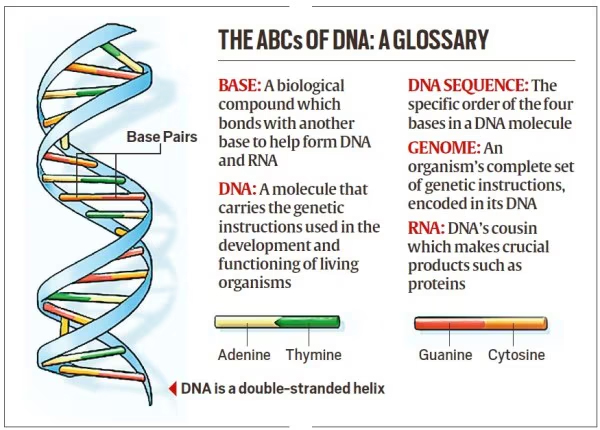Context:
In a landmark case, nine-month-old Kyle “KJ” Muldoon Jr. became the first known human to be successfully treated CPS1 Deficiency using custom base editing therapy—a next-generation, highly precise form of gene editing.
About CPS1 Deficiency:
CPS1 deficiency is a rare genetic disorder caused by a mutation in the CPS1 gene, which encodes the enzyme carbamoyl phosphate synthetase 1. This enzyme plays a crucial role in the urea cycle, the body's process for eliminating excess nitrogen.
Without this enzyme functioning properly, nitrogen accumulates in the body in the form of ammonia, leading to a dangerous condition known as hyperammonemia. If untreated, this buildup can cause brain damage, coma, and even death—making early diagnosis and intervention critical.
About the Breakthrough:
To address KJ’s CPS1 deficiency, researchers turned to an innovative gene editing technique called base editing. This method is derived from the better-known CRISPR-Cas9 system but offers greater precision and reduced risk of unintended consequences.
Instead of cutting the DNA—like CRISPR-Cas9—base editing modifies a single DNA base (the “letters” of the genetic code) without breaking both strands of the DNA helix.
How Base Editing Works:
The CRISPR-Cas9 system functions like molecular scissors, making double-strand breaks in DNA at targeted locations. After cutting, scientists rely on the cell’s natural repair mechanisms to introduce the desired genetic changes—often an unpredictable process.
Base editing, on the other hand, functions like a molecular pencil and eraser:
- A Cas9 enzyme is fused with a base-modifying enzyme.
- A guide RNA directs the complex to a specific location in the DNA.
- The base editor then alters a single DNA base—for example, changing a cytosine (C) to a thymine (T)—without breaking the DNA strand or inserting foreign material.
Advantages of Base Editing:
Base editing offers several significant benefits over conventional gene editing techniques:
- High Precision: It targets and corrects individual bases with remarkable accuracy.
- Reduced Off-Target Effects: Lower risk of unintended mutations in other parts of the genome.
- Minimal Cellular Stress: Avoids double-strand DNA breaks, reducing potential damage to cells.
- Efficient Delivery: Requires fewer components, making it easier to package into viral vectors or nanoparticle systems used for treatment.
Conclusion:
The successful treatment of KJ Muldoon Jr. represents a historic milestone in the field of gene editing and a beacon of hope for those suffering from rare genetic diseases. It showcases the incredible power of base editing to not only correct genetic errors but to potentially cure life-threatening conditions with precision and safety.







